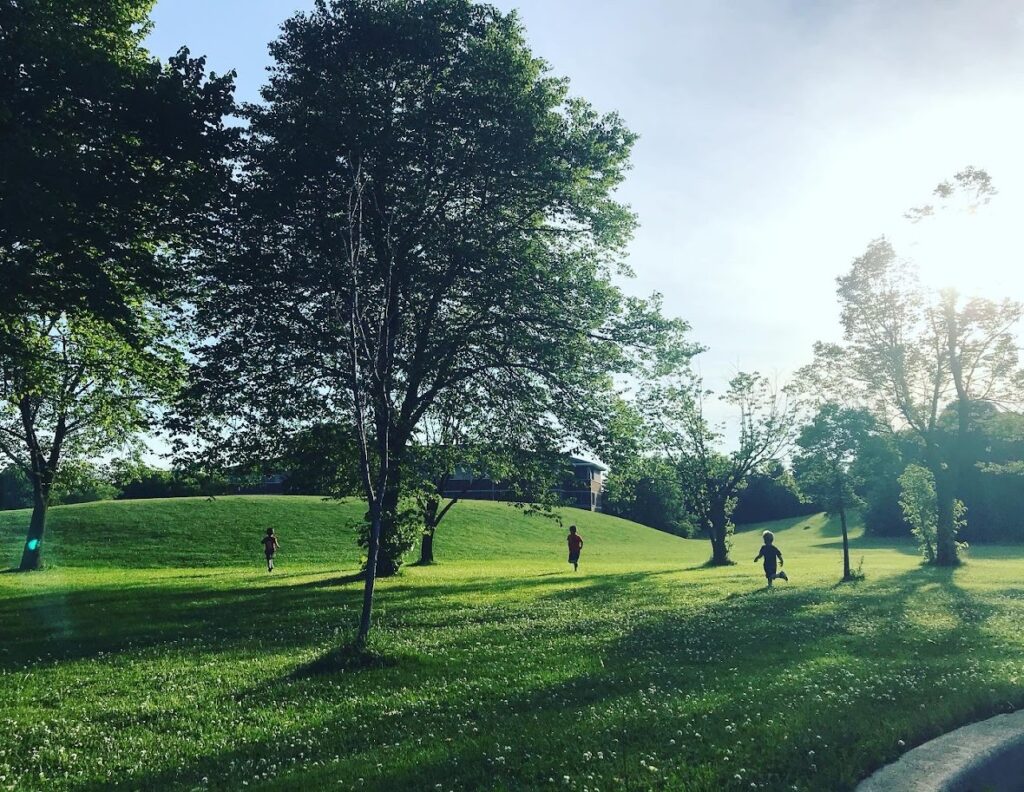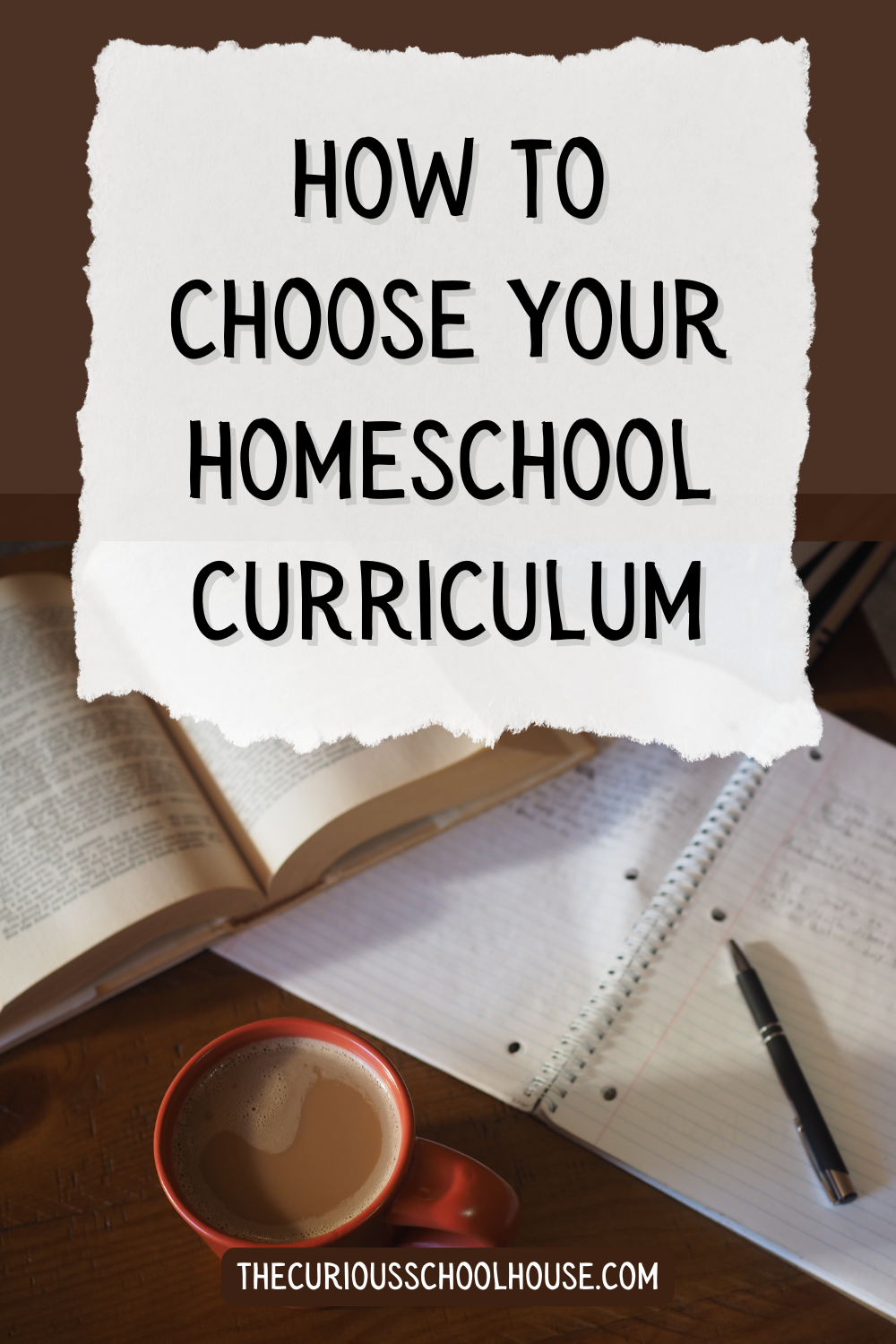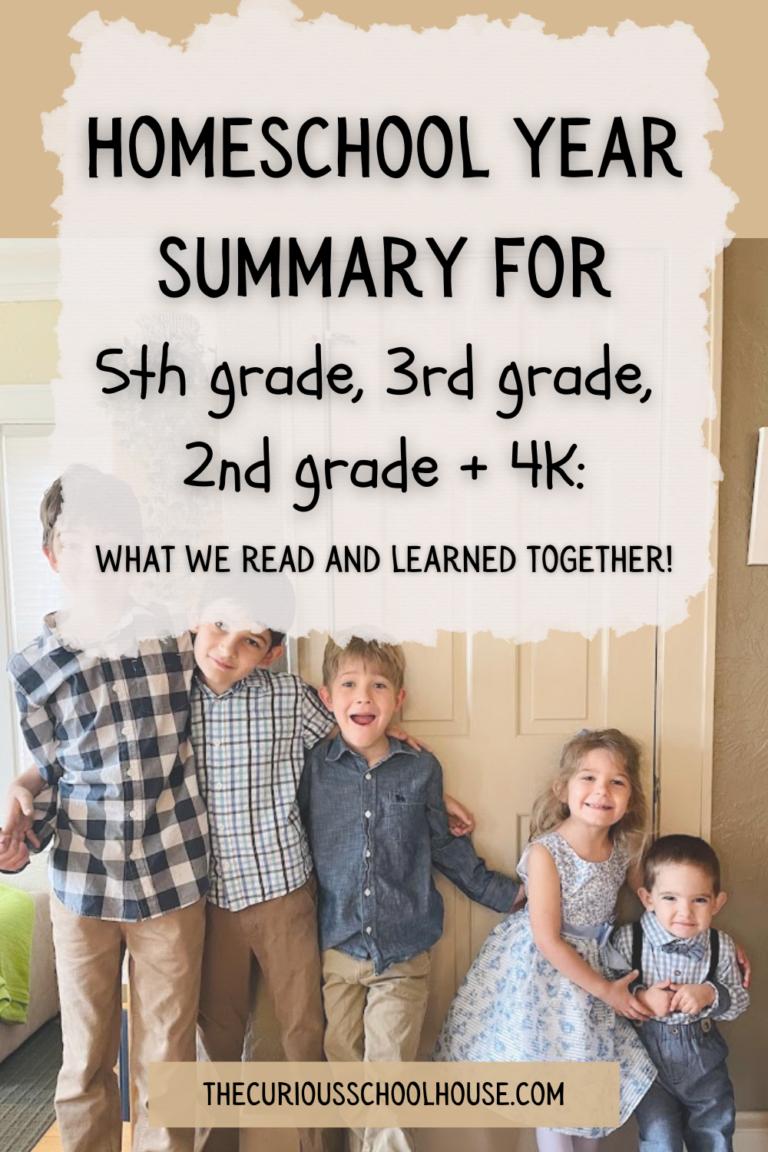How to Choose Your Homeschool Curriculum (and keep your sanity)
This post explains how I go about choosing homeschool curriculum; my method for homeschool planning, including four simple steps to think through before purchasing anything!
As I wrote here, this can be hard! Too many choices plus uncertainty about what you want equals STRESS. We are about to embark on our third year of homeschooling so I thought I would share the way that I go about planning – which is probably different from the way that will work best for you, because I am not you and you are not me, but perhaps it can give you a helpful idea or two.

1) I define or refine my homeschool vision & philosophy of education, mostly by reading helpful books (see the post I linked above) and by observing my children. I am working on writing down my goals and vision but I haven’t fully done so yet. Right now my “vision” is mostly in my head, and has been shaped and re-shaped by our experiences so far and all the books I’ve read and continue to read. All this to say – you don’t have to have a beautiful little phrase that you can chant as your homeschool mantra. Some general ideas of what you do and don’t like are sufficient to begin with!
2) I make a broad list of all the topics I might want to cover for each child. It helps me to look at some boxed (pre-planned) curriculum here to give me ideas about which subjects are generally covered in each grade. A Beka or Sonlight are examples of this type of curriculum that could give you a starting point, even if you don’t end up ordering anything from them.
My broad list for Big Brother this coming year (2nd grade) looked like this:
- math
- reading/spelling/handwriting/copywork/cursive
- science
- history
- piano lessons/music appreciation
- art
- geography
- recitation
- Bible
- logic/thinking skills
- nature study
- read aloud time
Note that it’s very general and probably too long. That’s ok!
3) Now I look at each subject and answer the following questions.
- Do we already have a curriculum or book for this?
- If yes, do we like it and feel it is working well? Is it still a good fit with my vision and my child’s learning style? Because this might change from year to year!
- If the answers are yes, yes, and yes, then it’s easy enough to continue on. If any answer is no, then it’s time to start looking at other options.
For example, after this step my notes on Math and Reading looked like this:
“Math: we can continue on with the Shiller math program we did last year. Reading: we finished our previous curriculum and need a new plan for this year.”

4) Here’s where it gets tricky: when you need something new and aren’t sure where to start (which is why the first year can be hard!). I will just list a few of the ways that I have discovered new materials that work well for our family:
- Recommendations From Friends. This is huge! I love hearing from people I trust about how they have used and loved a particular book or program. Plus, you can ask them any random question about it and you’ll get an answer, which is a little harder with…
- Recommendations From Books or Blogs. Yes, this is me harping on about books again. It’s not quite as good as a recommendation from someone I know personally, but oftentimes a description I read will convince me to try something new. Once I hear a recommendation, I’ll usually check out the…
- Reviews From This Website. This lady has been writing reviews for DECADES now but she covers basically every curriculum you will ever see, and her reviews have helped me to get a sense of if the material will align with my own vision or not. Finally, I also…
- Look At The Options On My Favorite Websites. Some of the ones I usually browse through when I need something new are: Timberdoodle, The Good and The Beautiful, Beautiful Feet Books, Sonlight, The Critical Thinking Company, and Memoria Press.
At this point, here’s what I came up with for Big Brother’s Reading for the coming fall:
“He’s reading fluently so we don’t need anymore phonics work. Instead, we will use the Sonlight Grade 4 list of readers, but borrow the books from the library (instead of purchasing them all) and work through them at our own pace (rather than strictly following their schedule).”
Question: Emily, this is waaaaaay too much work! Why don’t you just grab the Grade 2 full package set from Sonlight and call it a day?
A: You can absolutely do that and your planning life will be much easier. Some people love that and it works well for them! I personally don’t, and it wouldn’t work for me. Our “mix-and-match” approach began when I realized that our oldest was in different “levels” in different subjects, and I wanted to pick curriculum that would meet his needs in each area. Again, it goes back to my vision of what I want our homeschool to look like. I’d rather pick and choose my favorite books and materials from different areas so that I can “spread the feast” my very own way (see Charlotte Mason) for my own unique children. I also love planning and love looking at curriculum! Weird, I know… but it works for me.
Summary Thus Far, because we all need an excuse to use the word “thus”: I’ve defined my vision, made a list of topics, found the gaps where new materials are needed, and taken some time to discover new materials. Important Note: I do NOT buy anything yet! I will wait until the very end of my planning, when I am certain of what I want and need.
5) Before purchasing any materials, I make a rough schedule or routine for each child of how I think our week might go. This helps me to see if a) I’ve got way too many subjects and need to remove some and b) if the new curriculum I’m thinking about will fit within my week. For example, I may want to do a new science course that says to plan for 3 days a week, but I can only fit 2 days of science into my week right now. This doesn’t mean I can’t still choose this course but it’s worth thinking about how it will practically fit into my life before I buy it.
A few notes about this schedule:
- I am not a slave to the schedule and it will almost certainly change once we get going and see how these subjects work in real life. At this point it is only an Educated Guess.
- I leave a LOT of margin: subjects are only scheduled for four days, and I don’t pack in the days too heavily. I could plan to cover six topics five days a week and only get to five of them and feel continually behind – OR, I could plan to cover five topics Monday through Thursday, then add in one more on some days when we have a little extra time, and feel accomplished and ahead of the game. Which would you prefer?
- Having a preschooler and a baby in the house means that I must also think about when all this school will happen. I don’t have a set-in-stone time frame but I am mentally running through our options and making sure I don’t set my expectations too high. Right now we are planning to do most of our sit-down work during Baby Sister’s independent playtime in the morning and her nap time in the afternoon.
- Less is more. I want to leave plenty of room for real-life learning, play time, outside time, and free reading. In comparison to this 2nd grade schedule, my schedule for our almost-6-year-old Kindergartner has 3 subjects a day, and our 4-year-old preschooler will have 1 subject a day (which I expect to take a grand total of 5 minutes). They will not start most of the subjects listed below until first grade.
6) Now that I know which materials I want, and how they will fit into our schedule, I will think about our budget (and discuss with the husband!) and then order them. Woohoo! And it feels like Christmas every time a box with new curricula is delivered to our porch.
Warning: often there is a problem with this step. There may be something I would really like to do, but I can’t fit it into our schedule or our budget, or both.
Gahhh woe is me this year will be a failure and my children will learn NOTHING.
Actually, this is a great opportunity to be creative. Can I find something similar for cheaper, or free? Or make my own? Can I get that expensive book at the library? Can I fit in that unit study over Christmas, or during the summer, or ask dear husband to spend some special time working on it with the children during the weekend? Homeschooling gives us more flexibility than we initially realize and there’s nothing wrong with taking full advantage of it.

7) We hold our curriculum lightly and realize it is our servant (not our master), because sometimes we will find that something we chose isn’t working for our family. How frustrating! But I am including this step because it happens to everyone, even with the best planning. I’m all for giving new materials a solid chance and not giving up at the first difficulty – but it’s also not worth struggling through a whole year with something you hate.
You and your child might be happier if you give it up and look for something that is a better fit! Consider the money that you spent to be an investment into your Personal Research and Teacher Development – you now know your own teaching style, likes/dislikes, and your child’s learning style even better, and that is valuable.
There you have it! This is how I’ve planned our third homeschool year, and I am very much looking forward to getting started. Each year so far has gotten exponentially more interesting as our children change and grow, and as I change and grow as a teacher. At this moment I am also more grateful than I’ve ever been before for the freedom to homeschool.
Our world feels so uncertain this year as we grapple with racial tensions, a presidential election, a global pandemic and a myriad of other divisive issues – but we’ve still got the freedom to learn together at home in our own beautiful little corner of the world and I’m so thankful to do so.
Originally written July 14 2020







